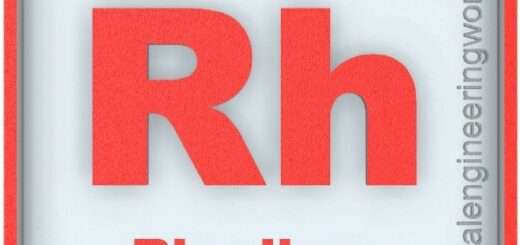Cobalt Element Properties and Information

Cobalt Element Properties and Information
Cobalt is the twenty-seventh element on the periodic table. Elements are arranged in the periodic table on the basis of the atomic number. Atomic number is the number of protons in the nucleus of the atom. Cobalt has an atomic number of 27. It is located in the Group 9 and Period 4 of the periodic table of elements. It is denoted by Co. The name is derived from the German word ‘Kobald’ which means Goblin.
George Brandt became interested in some dark blue ore found in copper mines. He analyzed it and found that it contained a metal which was still unrecognized in scientific community. He published his results in 1739 but he initially faced resistance because many chemists thought it was a mixture of iron and arsenic. Eventually they recognized it to be a new element. This element was cobalt.
Cobalt is found in nature in combined form except for very small deposits of free cobalt found in alloys of natural meteoric iron. It makes up to 0.0029% of the Earth’s crust. The most common minerals which contain cobalt are cobaltite, skutterudite, and erythrite. Several tonnes of cobalt are also found in deepest parts of the ocean in manganese rich nodules; these nodules contain many transition metals.
Physical Properties
- Cobalt is a silvery-blue lustrous metal which is magnetic in nature.
- The atomic mass of cobalt is 58.9332
- The melting point of cobalt is 1495°C
- The boiling point of cobalt is 2927°C
- The density of cobalt is 8900 in S.I. units at 20°C
- Metallic cobalt occurs in two structures; face-centred cubic (fcc) and hexagonal close packing (hcp).
- Cobalt-59 is the only stable isotope of cobalt which is naturally found on earth. There are 22 radioisotopes of cobalt which has been characterized till now.
Chemical Properties
- If cobalt is exposed to air then a passivation oxide layer forms on the surface of the metal.
- Cobalt reacts very slowly with the moist air at ambient conditions; it does not react with dry air.
- Cobalt reacts slowly with mineral acids.
- Metallic cobalt is weakly reducing in nature.
- Cobalt easily gets attacked by halogens and sulfur.
- Cobalt reacts with all the halogens at high temperatures to yield binary halides.
Methods of Production
- Froth flotation: The ore is subjected to surfactants. The surfactants get bound to components of the ore in such a way that it leads to enrichment of the cobalt metal in the ore. The enriched ore is then roasted to oxidise copper and iron to its subsequent oxides and obtain cobalt sulphate solution. The cobalt sulphate has many applications and can be sold directly in market.
- Leaching: The cobalt sulphate solutions may be leached fur further refining. Water is used as a leaching solvent to extract sulphates and arsenates. The residue is further leached with sulphuric acid.
- Aluminothermic reaction: In order to obtain metallic cobalt, the products obtained from the above processes is oxidised to cobalt oxide and then the metallic cobalt is recovered using aluminothermic reaction.
Relevance in Chemical and Related Industries
- Catalysts: Cobalt compound based catalysts are widely used in chemical and related industries. They are used in Fisher-Tropsch process, Hydroformylation of alkene, to make terepthalic acid, to make paints, varnishes, as drying agents, to accelerate growth of polyester resins, in hydrodesulfurization of petroleum, etc.
- Superalloys: The cobalt metal is mixed with many metals to create high performance alloys called superalloys which are resistant to high temperatures, corrosion, and wear. They are mixed with chromium, tungsten, molybdenum, nickel, aluminium, iron, etc and used in turbines, aircrafts, orthopedic equipments, jewellery etc.
Relevance in Other Industries
Batteries: Lithium cobalt oxide is used in lithium-ion battery cathodes to release lithium ions during operation. Cobalt is also used in nickel-cadmium and nickel metal hydride batteries to improve oxidation of nickel.
Health Effects on Exposure
- Inhalation: If cobalt is inhaled in large amounts which can happen at cobalt centered work places then it causes asthma and pneumonia.
- Over-uptake: If cobalt is not bound to the soil or sedimentary particles then it gets easily absorbed by crops and plants. Excess cobalt usually gets stored in fruits and seeds. Eating such fruits regularly can cause over-uptake of cobalt and excess of cobalt in human body which leads to nausea, vomiting and problems in heart, thyroid, and eyes.
Effects on Surroundings
- Plants: Cobalt released from industries via combustion action into the atmosphere gets settled on the soil. Since this cobalt is not bound to soil, it easily gets absorbed by the plants. It leads to competition of absorption of nutrients which may lead to excess of cobalt in plants and deficiency of some other mineral.
- Animals: Herbivorous animals may eat the cobalt-rich plants which lead to excess of cobalt inside their body. Cobalt is not known to bio-magnify in animal food chain hence if the herbivorous animal gets eaten by carnivorous animal then the cobalt won’t increase in the body of the carnivorous animal.
References:
https://www.rsc.org/periodic-table/element/27/cobalt
































